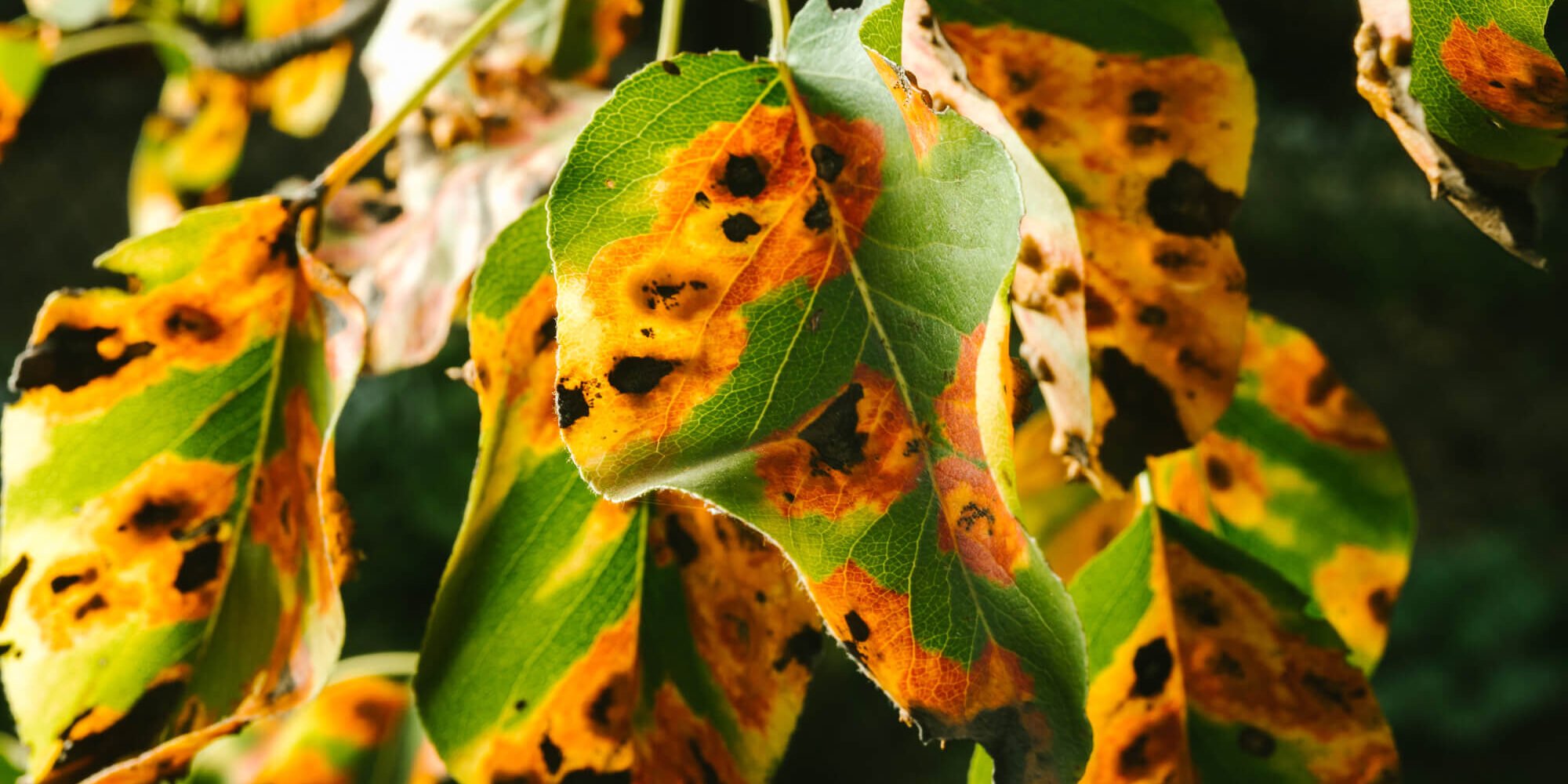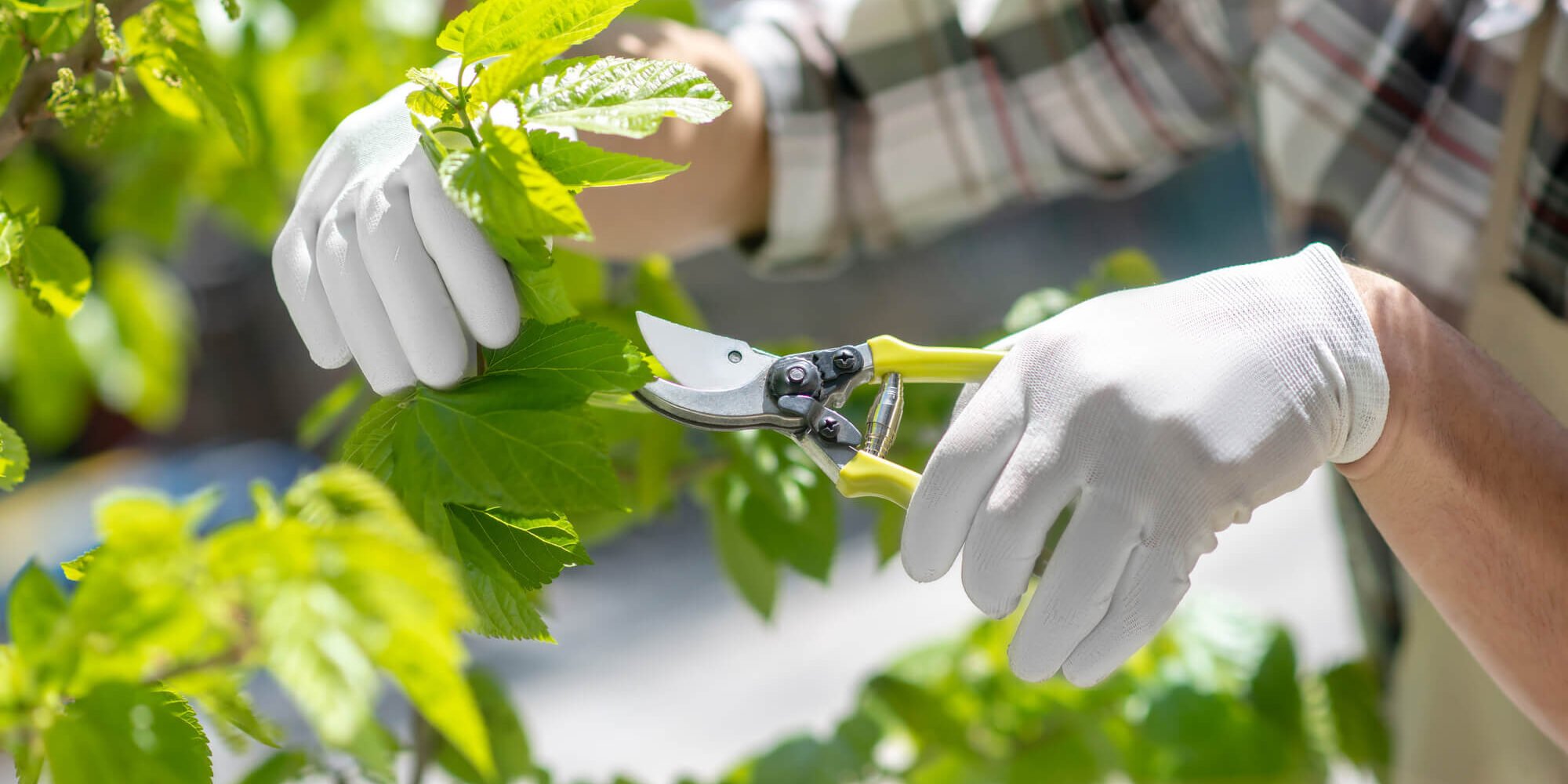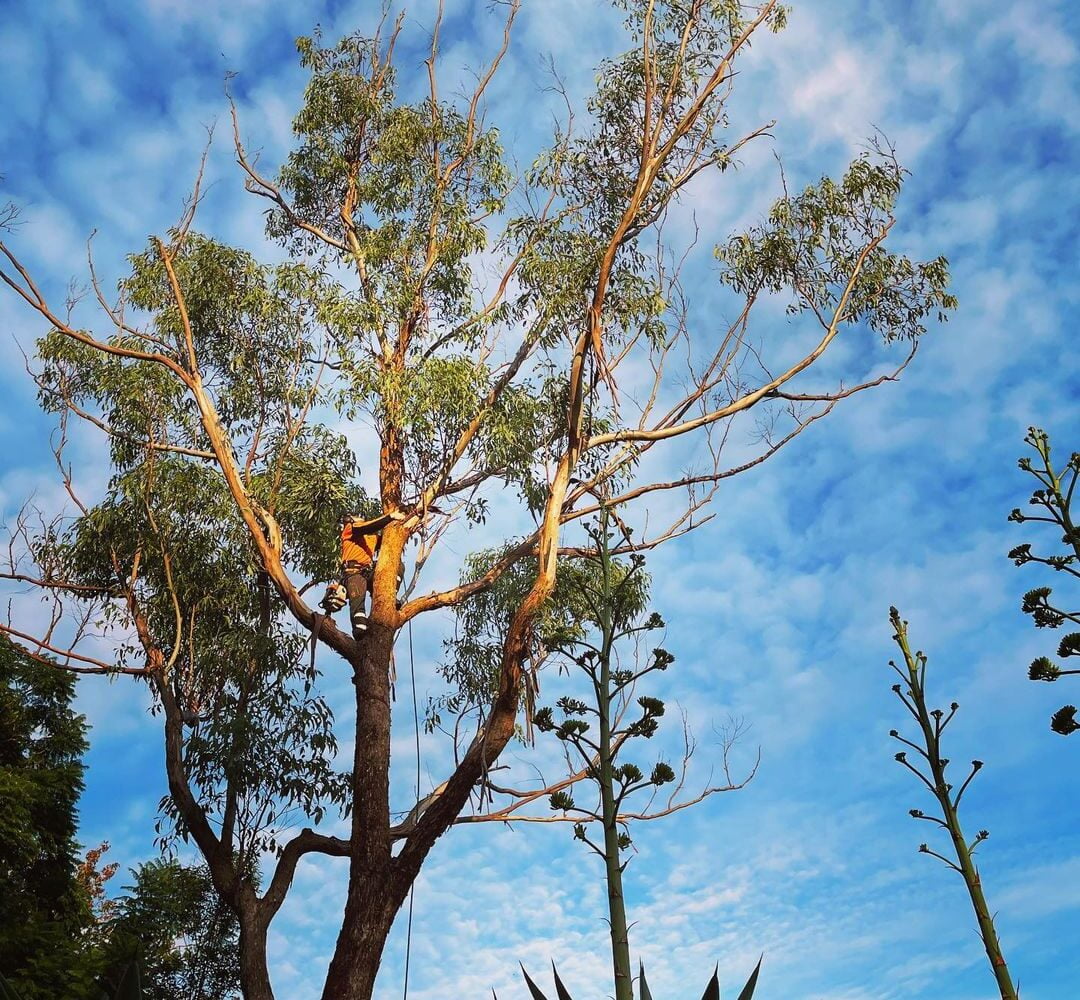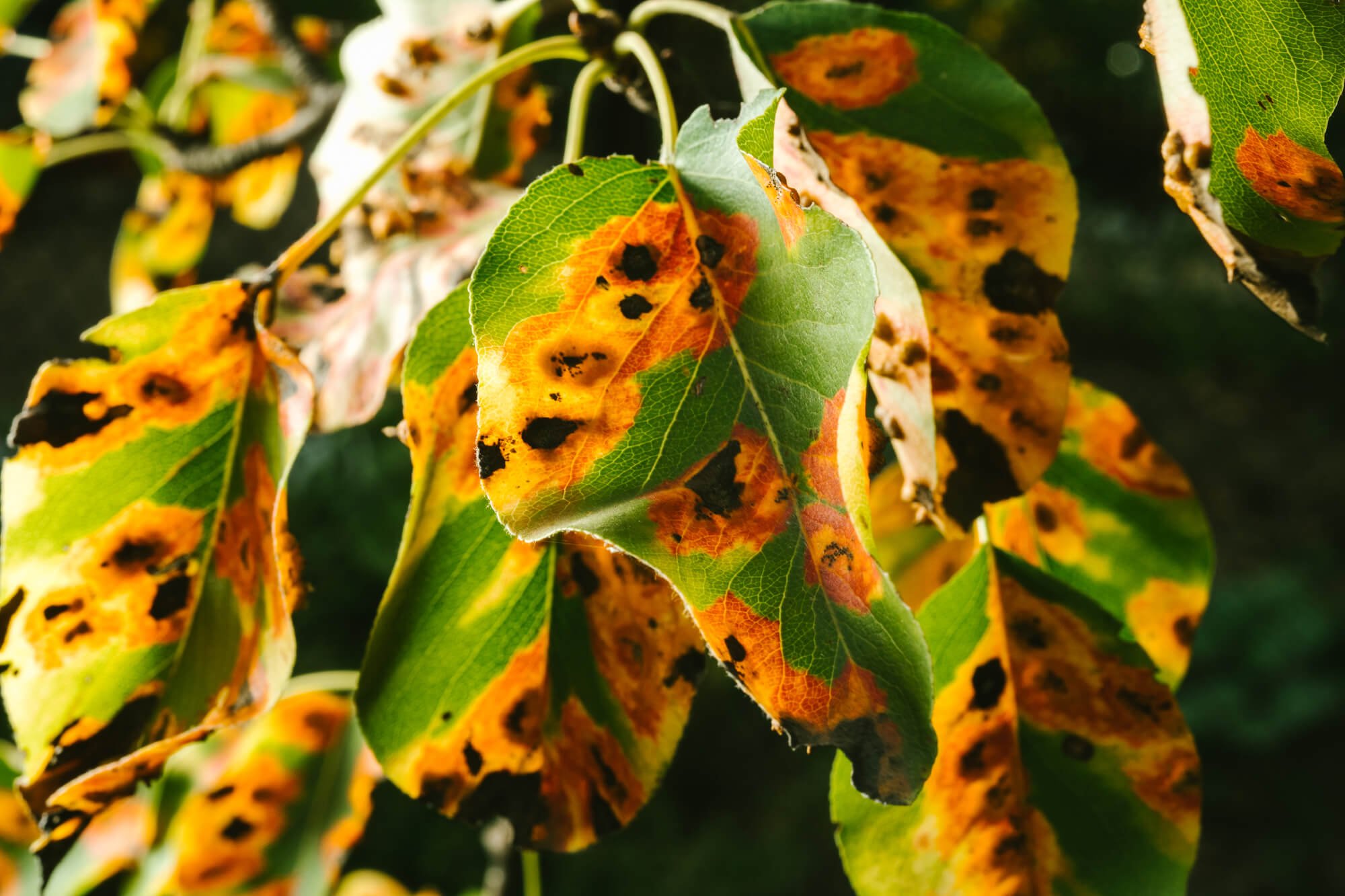What is a Tree Disease or Pest?
Tree diseases and pests are detrimental conditions that can cause significant damage to your trees, plants, and overall landscape. They are often caused by various fungi, bacteria, viruses, and destructive plant pests. These conditions can result in a range of symptoms such as discolouration, leaf drop, and in severe cases, even tree death.

Common Tree Diseases and Pests in Australia
1. Dutch Elm Disease
Dutch Elm Disease is a deadly tree disease caused by a fungus that is spread by the elm bark beetle. This disease is particularly destructive and can cause wilting, yellowing and curling of leaves and, ultimately, tree death.
2. Myrtle Rust
Myrtle Rust is a fungal disease that affects plant species in the Myrtaceae family, including eucalyptus, bottlebrush and lilly pilly trees. It is characterized by bright yellow spore masses on leaves, shoots, buds, flowers and fruits.
3. Banana Phytoplasma Diseases
These diseases are caused by microscopic organisms called phytoplasmas, which live in the phloem tissue of plants and are spread by insects. Symptoms include yellowing and wilting of leaves, reduced fruit size and quality, and in severe cases, plant death.
4. Stem Borers
Stem borers are a type of insect that burrow into the stems of trees, causing damage and often leading to tree death. They are a common fruit tree pest in Australia, attacking a variety of fruit trees, including apple, pear and peach trees.
5. Fruit Flies
Fruit flies are an abundant pest in Australia, particularly in warmer climates. They lay their eggs in fruit, causing it to rot and drop from the tree. They are considered one of the most destructive plant pests due to their ability to multiply rapidly and spread diseases.
Identifying Tree Diseases and Pests
Inspecting Trees for Signs of Disease or Infestation
Inspecting your trees regularly is crucial for early detection of diseases and pests. Symptoms can vary depending on the type of disease or pest, but some common signs include discoloured or distorted leaves, premature leaf drop, presence of pests or their damage, and unusual growth patterns.
Diagnosing the Problem with Professional Help
If you’re unsure about a potential problem with your tree, it’s best to seek help from a professional arborist. They have the expertise to correctly identify the issue, whether it’s an unusual pest infestation or a common garden pest causing damage.


Preventing Tree Diseases and Pests
Pruning to Promote Healthy Growth
Regular pruning can help keep your trees healthy and resistant to diseases and pests. By removing dead or diseased branches, you’re reducing the chances of infection spreading throughout the tree.
Planting Disease-Resistant Species
Planting disease-resistant tree species can be a proactive way to avoid issues. Native trees often have a natural resistance to local pests and diseases, making them a good choice for your garden.
Avoid Overwatering and Poor Drainage
Overwatering can lead to root rot and other diseases. It’s important to ensure your trees have proper drainage to avoid waterlogged soil.
Regularly Monitor for Infestations or Infections
Early detection is key in managing tree diseases and pests. Regularly check your trees for signs of disease or pests, such as discoloured leaves or the presence of insects.
Utilizing Appropriate Fertilizers and Soils
Healthy soil rich in organic materials can help prevent many tree diseases. Using the right fertilizers for your specific tree species can also contribute to their overall health and resistance to diseases and pests.
Maintaining Proper Sanitation Practices
Good sanitation practices, like cleaning up fallen fruit and leaves, can help prevent the spread of diseases and pests. This is particularly important if you’re dealing with an infestation of urban pests.


Treatments for Existing Tree Diseases and Pests
If you’ve already identified a disease or pest affecting your trees, it’s time to consider treatment options. In many cases, a combination of physical, biological, and chemical controls will be necessary.
Physical controls include practices such as removing affected parts of the tree, installing physical barriers to prevent pests from reaching the tree, or trapping pests. Biological controls involve using natural enemies of the pests, such as predators, parasites, or pathogens, to reduce their numbers.
Chemical Control Options for Common Tree Diseases and Pests in Australia
Insecticides & Miticides
In certain situations, the use of chemical control measures like insecticides and miticides may be necessary. These are designed to control pests such as stem borers and fruit flies. It’s important to follow label instructions carefully to avoid harm to beneficial insects and the environment.
Remember, while pests and diseases can be a challenge, with a bit of knowledge and care, you can protect your trees and enjoy a healthy, thriving garden. Whether you’re dealing with a common garden pest or an exotic plant pest, it’s crucial to take swift action to mitigate damage and protect your trees.
As always, if you’re unsure or need professional assistance, don’t hesitate to reach out to a local arborist or pest control expert. They can provide valuable advice and services to help keep your trees healthy and pest-free.


Social